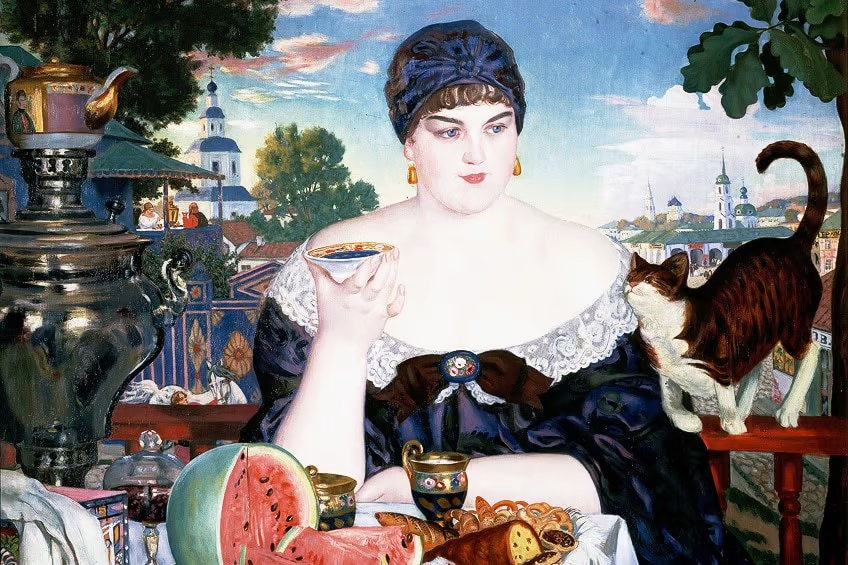Art Nouveau Paintings – Explore the Art Nouveau Style in Artworks
The Art Nouveau period gave rise to many decorative and modern artworks in art history, across the world. Among the likes of Art Nouveau practitioners, you may associate famous names such as Gustav Klimt and Édouard Vuillard with this art period. This article will introduce you to all you need to know about the art period known as Art Nouveau, including some of the most famous Art Nouveau artworks as seen in painting.
Contents
- 1 An Introduction to Art Nouveau
- 2 Art Nouveau Characteristics
- 3 Art Nouveau Paintings
- 3.1 Woman in a Striped Dress (1895) by Édouard Vuillard
- 3.2 Tournée du Chat Noir de Rodolphe Salis (1896) by Théophile Steinlen
- 3.3 Femmes à la Source (1898) by Paul Sérusier
- 3.4 Flora (1899) by Élisabeth Sonrel
- 3.5 The May Queen (1900) by Margaret Macdonald
- 3.6 Judith and the Head of Holofernes (1901) by Gustav Klimt
- 3.7 The Dancer’s Reward, for Salomé by Oscar Wilde (1907) by Aubrey Vincent Beardsley
- 3.8 The Tree of Life, Stoclet Frieze (1909) by Gustav Klimt
- 3.9 The Slav Epic (1910 – 1928) by Alphonse Mucha
- 3.10 Reclining Woman with Green Stockings (Adele Harms) (1917) by Egon Schiele
- 3.11 Merchant’s Wife at Tea (1918) by Boris Kustodiev
- 4 The Impact of Art Nouveau
- 5 Frequently Asked Questions
An Introduction to Art Nouveau
The majority of painters found in the Art Nouveau period are commonly associated with other art movements such as post-Impressionism and Symbolism. Before we dive into Art Nouveau’s best paintings, let us take a look at what this period encompassed and why it is important. Art Nouveau first emerged in the 1880s under the journal Le’Art Moderne, which was a term used to describe an art group of painters and designers who sought to bring about reform via their art. The group was called Les Vingt and was formed in 1883.
Every year, the group would host an exhibition to showcase their talents, a Salon of sorts, and also invite international artists to participate.
In France, the term Art Nouveau was better understood as Style Moderne and the British regarded the style as the modern style. The use of the word was made famous by a recent establishment, Maison de l’Art Nouveau, which opened its doors in 1895. Deemed art that was of a fresh, modern aesthetic and appeal received multiple names across the globe and was even called Shiro-Uma in Japan.
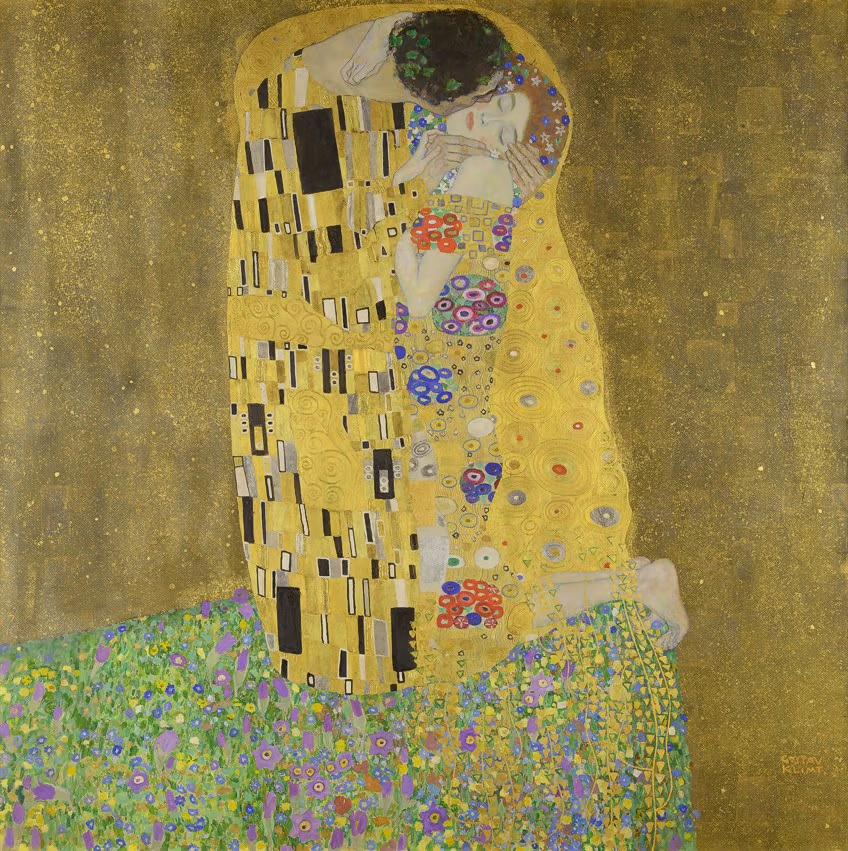
The origin of Art Nouveau, however, was in Paris and was launched by Siegfried Bing, who was the founder of the Maison de l’Art Nouveau. Around 1891, he launched a magazine that soon bolstered the rise of Japonism in Europe. The magazine was fully devoted to the display of Japanese art, thus exposing viewers and creatives to other perspectives on design and style.
Around 1892, Bing arranged an exhibition that featured artists such as Édouard Vuillard, Pierre Bonnard, Félix Vallotton, Eugène Samuel Grasset, and Henri de Toulouse-Lautrec, who participated in the display of modern painting and decorative arts.
Bing’s gallery soon went on to host a peculiar show that showcased the works of Toulouse-Lautrec, Paul Signac, and Georges Seurat alongside posters made by Aubrey Beardsley, jewelry crafted by René Lalique, and glass acquired from Émile Gallé and Louis Comfort Tiffany. A display of unorganized style, the exhibition is known to be one of the first Art Nouveau exhibitions aimed at providing a space for aspiring and ambitious artists to showcase “the modernity of their tendencies”.
Art Nouveau: The Global Art Movement
The transition to a modern approach to the representation of subjects in art, literature, painting, and design was also intended to allow for experimentation and integration of design with poster-making, stylistic motifs, modern art forms, and the move away from traditional, naturalistic art forms. This change was not only initiated in Europe but also took place across the world. The translation, however, differed in what each country chose to emphasize on.
The Art Nouveau movement is an international movement that gave rise to the bold and defiant posters and imagery found in 19th-century literature, usually crafted for events, books, and public entertainment.
Art Nouveau was also seen in architecture, which involved the amalgamation of the fine arts with the applied arts and is best represented in the works of Henry van de Velde and Victor Horta of Belgium. Henry van de Velde also went on to produce articles on the emerging art style and movement that began seeping its way into the arts and crafts realm.
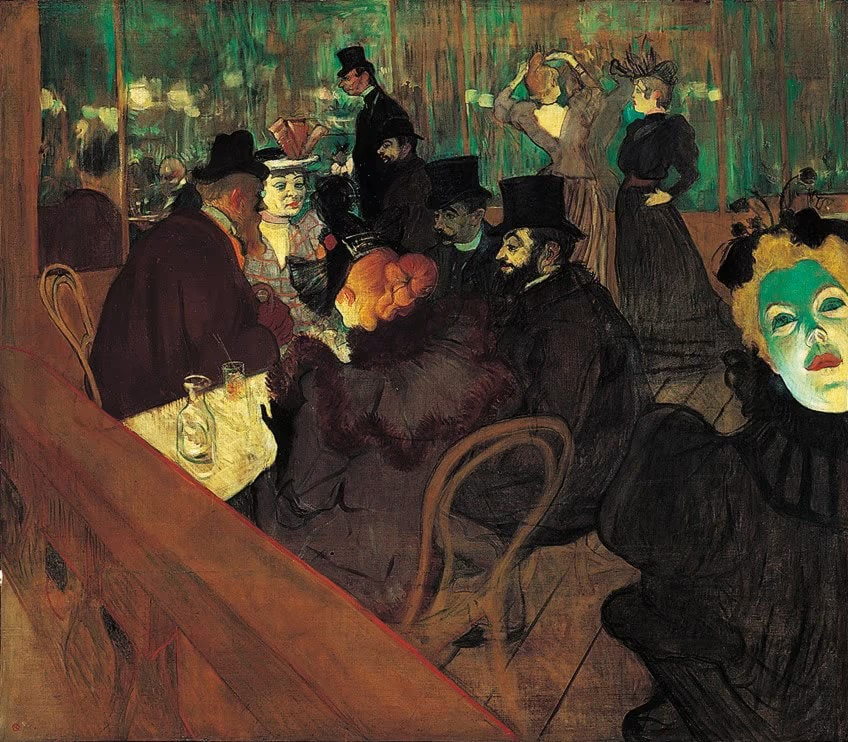
The ornamental and intricate design offered by Art Nouveau saw its reflection in the designs of buildings, textiles, cutlery, and even furniture. Germany recognized the Art Nouveau style as the Youth style (Jugendstil), which emerged around 1896 in a famous magazine, Die Jugend. The focus here was on the design of art forms that did not necessarily hold any meaning or purpose but served to “move” anyone who encountered them through their unique design elements. Vienna also saw the rise of the modern art style, which emerged as the Secessionist era of Austria.
This group of artists came together to reject the conservative nature and traditions of an art academy and included members such as Gustav Klimt and Josef Hoffman.
The Secessionist movement had spread across furniture, architecture, and anything that involved design (essentially almost everything). Characteristics of the innovations from the Austrian Art Nouveau movement include the display of expressive curved lines and a focus on geometrical precision. Moving across to Spain, Art Nouveau artwork emerged as the Modernista movement, which was spearheaded by Antoni Gaudí, and as Modernisme focusing on the revival of Catalan culture through expressive design in architecture.
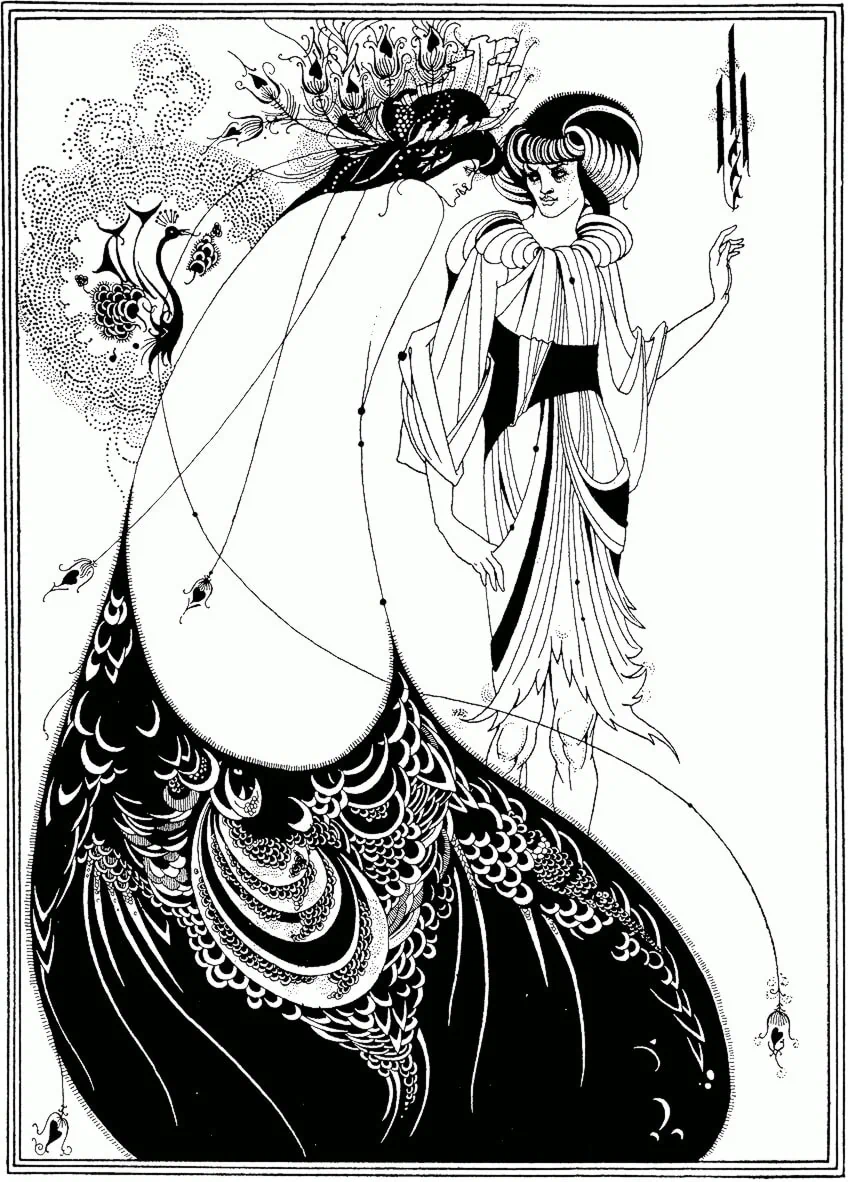
The trend swept across Catalonia and Barcelona and was active from 1888 until 1911, with the death of the famous Modernisme poet, Joan Maragall. Although we cannot discuss Art Nouveau without touching on its major contributor, Asia. The designs that emerged from Asia, particularly Japan, contained motifs that included imagery of flowers, voids, flat dimensions, and naturalistic representations painted on woodblocks, which are highly recognized features in many Art Nouveau artworks.
The introduction of visual imagery from Japan spawned the emergence of posters, including other design references involving fashion, floral patterns, and advertising.
Art Nouveau Characteristics
Art Nouveau paintings are often characterized by natural shapes and forms and are thought to be a middleman between the fine arts and the applied arts. Art Nouveau is often found in decorative arts, including ceramics, furniture, interior design, glass art, and graphic design. Other Art Nouveau characteristics in painting include a visual element that evokes a sense of dynamism or movement, the presence of an S-shaped line, also referred to as a whiplash sinuous line, and asymmetry.
Art Nouveau paintings also incorporate other materials or the depiction of materials such as concrete, iron, and glass, all considered to be “modern” materials to portray “unusual” forms.
Art Nouveau Paintings
As mentioned before, the Art Nouveau period was also intertwined with other art movements such as the post-Impressionist and Symbolist movements. Each artist who created these Art Nouveau paintings below also falls into multiple categories in terms of art movement and style. Below, you will find a few excellent examples to help guide your understanding of what defines an Art Nouveau painting.
Woman in a Striped Dress (1895) by Édouard Vuillard
| Artist | Édouard Vuillard (1868 – 1940) |
| Date | 1895 |
| Medium | Oil on canvas |
| Dimensions (cm) | 58.7 x 65.7 |
| Where It Is Housed | National Gallery of Art, Washington, D.C, USA |
Created as a decorative painting for the publisher of the avant-garde journal, La Revue Blanche in 1895, Woman in a Striped Dress is considered an Art Nouveau painting for Édouard Vuillard’s use of the Symbolist theory of evoking synesthesia within the painting. Synesthesia refers to the method used by artists to use one sense to evoke another.
In this painting, there is a woman who is seen arranging flowers. This woman is said to be a woman who Vuillard admired.
Although not directly alluding to her, the generous quality of Vuillard’s use of the color red in the stripes on the woman’s dress could be a reference to the sense evoked by the music that Misia, the woman who Vuillard saw as the woman in the painting, produced. It is also important to note that Misia was the wife of the publisher, whom Vuillard produced five decorative paintings for.
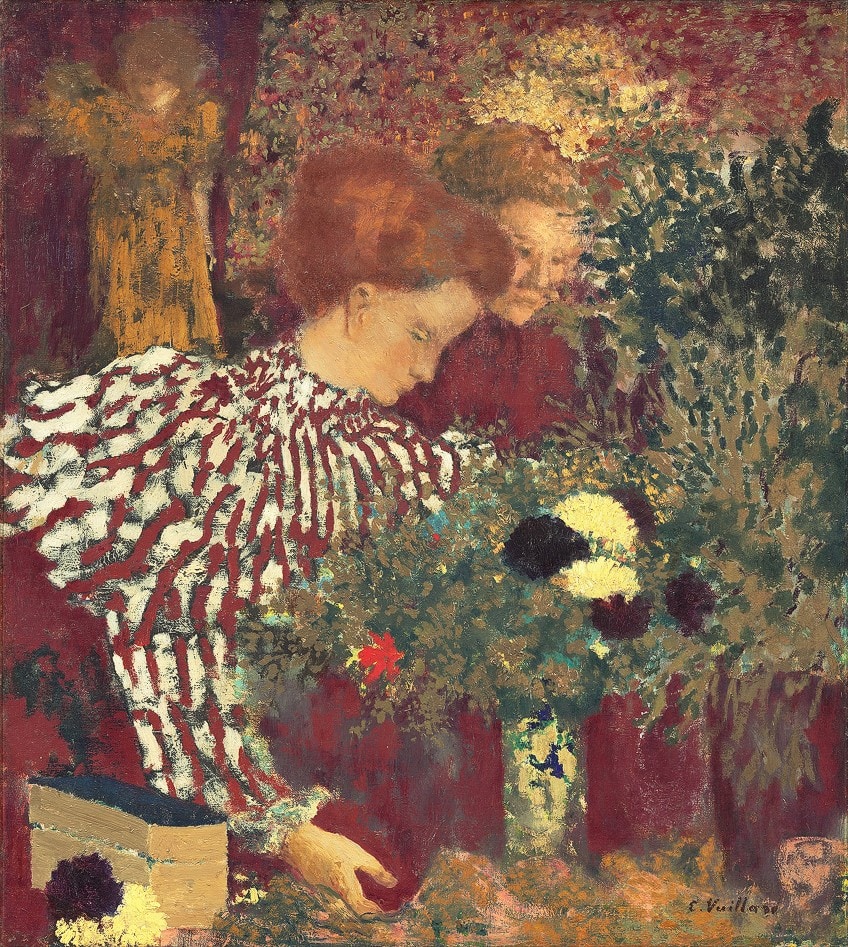
The Art Nouveau-ness of this painting is evident in the setting in which the work was produced, considering that Vuillard was also a member of a group of artists (Les Nabis) who came together with one goal in mind – to challenge the traditions of Impressionism and in light of Paul Gauguin’s poetry and Symbolist influence, they wished to recreate the natural world through artificial representations in color and depth.
In the painting, Vuillard makes use of a restricted color palette of reds, yellows, ochres, and various warm-toned colors.
Paying attention to the colors, one can observe that they are rendered using detailed patterns. What makes this work as an Art Nouveau piece is not only the color and pattern but the focal point of decor and the use of pattern, color, and tonal arrangement to create an intimate scene.
Tournée du Chat Noir de Rodolphe Salis (1896) by Théophile Steinlen
| Artist | Théophile Steinlen (1859 – 1923) |
| Date | 1896 |
| Medium | Poster |
| Dimensions (cm) | 95.9 x 135.9 |
| Where It Is Housed | Zimmerli Art Museum, New Jersey, USA |
Famous Art Nouveau poster painter and illustrator, Théophile Steinlen, is recognized by this iconic image of a black cat, which became a symbol of the artistic establishment set up by Rodolph Salis in 1881. This is said to be the poster and cabaret that launched Steinlen’s career in poster-making that contained political satire and critical social commentary.
The Swiss painter was heavily invested in his designs and loved his cats. His adoration of his feline companions can be seen in his published work Dessins Sans Paroles Des Chats.

Femmes à la Source (1898) by Paul Sérusier
| Artist | Paul Sérusier (1864 – 1927) |
| Date | 1898 |
| Medium | Oil on canvas |
| Dimensions (cm) | 130.8 x 57.4 |
| Where It Is Housed | Musée d’Orsay, Paris, France |
An artwork depicting one of the most enchanting Art Nouveau styles, Femmes à la source (Women at the Spring) was painted in 1898 by one of the founders of the Les Nabis group, Paul Sérusier. Within his art, Sérusier wanted to explore the expression of abstract ideals with his spiritual beliefs in conjunction with the decorative style of the Art Nouveau period.
Femmes à la source makes use of contrasting colors arranged in a decorative Art Nouveau style to depict women heading in a procession towards the water or “source”.
Sérusier also borrowed the influence of ancient Greek mythology where the women (or the Danaides), who were the daughters of King Danaus, were married off and received instructions to murder their husbands on their wedding evening. The punishment according to the story suggests that these women were condemned by the Gods and were sent to eternal purgatory, which required them to perform the perpetual ritual of filling their water vessels to the brim.

The dominant yellow-green hues suggest a sense of acceptance, which Sérusier seemed to portray in the painting alluding to the women’s acceptance of their punishment and “going with the flow of fate” despite purgatory. The only lasting trait, perhaps to be admired in this Art Nouveau painting, is the obedience of the women from their father, through to the murders, and purgatory.
Among his list of influencers was, as you guessed it, Paul Gauguin.
Sérusier spent time painting with him and he was known to be a fan of Gauguin’s style and use of color. Femmes à la source was created for decoration at the Chateau de l’Ermitage, which was the home of sculptural sensation, Georges Lacombe. Sérusier had also decorated Lacombe’s art studio in Versailles in 1893.
Flora (1899) by Élisabeth Sonrel
| Artist | Élisabeth Sonrel (1874 – 1953) |
| Date | 1899 |
| Medium | Watercolor on paper |
| Dimensions (cm) | 46.5 x 25 |
| Where It Is Housed | Private collection |
Élisabeth Sonrel is a French Art Nouveau artist who was heavily influenced by the aesthetics that Art Nouveau had to offer. Her works included posters and paintings, which transitioned into the art style defined as the pre-Raphaelite style. Sonrel also studied at the École des Beaux-Arts and was also an avid admirer of the works of Sandro Botticelli.
For the women, by a woman, this incredible French Art Nouveau painter portrayed women across mythological and biblical scenes, including Arthurian romance narratives.
Her work was incredibly successful during an Art Nouveau-themed Exposition Universelle held in 1900, where she won numerous medals. Flora (1899) is an Art Nouveau portrait of the mythological figure Flora, who in Roman mythology was known as the goddess of flowering plants. In some mythological narratives, the flower goddess is also associated with Aphrodite, the goddess of desire and love.
In the portrait, Sonrel makes use of a mixture of cool and warm tones with similar values for the added effect of flatness.
Almost as though Flora was a sketch out of a play, Sonrel used light outlines across the painting for definition with the flowers in the foreground receiving more prominent outlines. Her design-like quality in her painting perfectly marries the style of Art Nouveau with the pre-Raphaelite style and her subject matter, mythology.
The May Queen (1900) by Margaret Macdonald
| Artist | Margaret Macdonald Mackintosh (1864 – 1933) |
| Date | 1900 |
| Medium | Mixed media, gesso |
| Dimensions (cm) | 158.8 x 457 |
| Where It Is Housed | Kelvingrove Art Gallery and Museum, Glasgow, UK |
Painted by the queen of Art Nouveau herself and one of the earliest femme artists of the late 19th century, Margaret Macdonald was a Scottish artist whose work set the tone for one of the Art Nouveau styles known as the Glasgow style. Macdonald opened up her studio with her sister, who also attended the Glasgow School of Art.
The Macdonald Sisters Studio created works that were inspired by Celtic folklore and imagery.
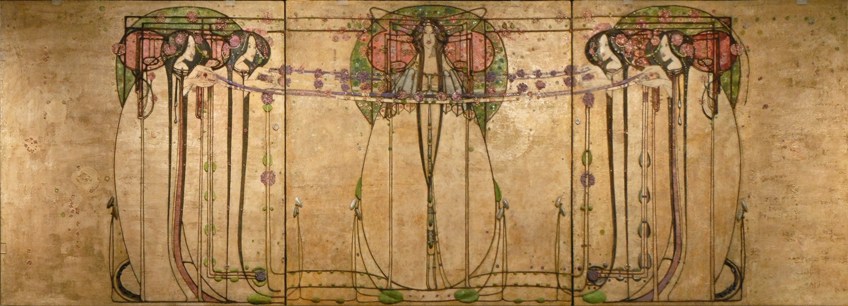
In her painting The May Queen (1900), one can observe the elongated female forms coupled with a muted color palette and a balance between natural elements and geometric shapes. During the time, this combination of visual elements was unique and this is what set Macdonald apart from the crowd during the Art Nouveau era.
Although classified as an Art Nouveau artwork, The May Queen does not seem to contain any vivid or bright colors, rather the work is defined as Art Nouveau for its exploration of flatness, geometry, and natural motifs.
Judith and the Head of Holofernes (1901) by Gustav Klimt
| Artist | Gustav Klimt (1862 – 1918) |
| Date | 1901 |
| Medium | Oil on canvas |
| Dimensions (cm) | 84 x 42 |
| Where It Is Housed | Österreichische Galerie Belvedere, Vienna, Austria |
Perhaps one of the most iconic and recognized Art Nouveau portraits by Viennese artist Gustav Klimt represents the Art Nouveau woman, Judith, with the head of Holofernes, shortly after she beheaded him. The painting is also referred to as Judith I and had also been recreated by Klimt in 1909.
Judith, a Jewish widow, is a biblical character who is often portrayed as heroic.
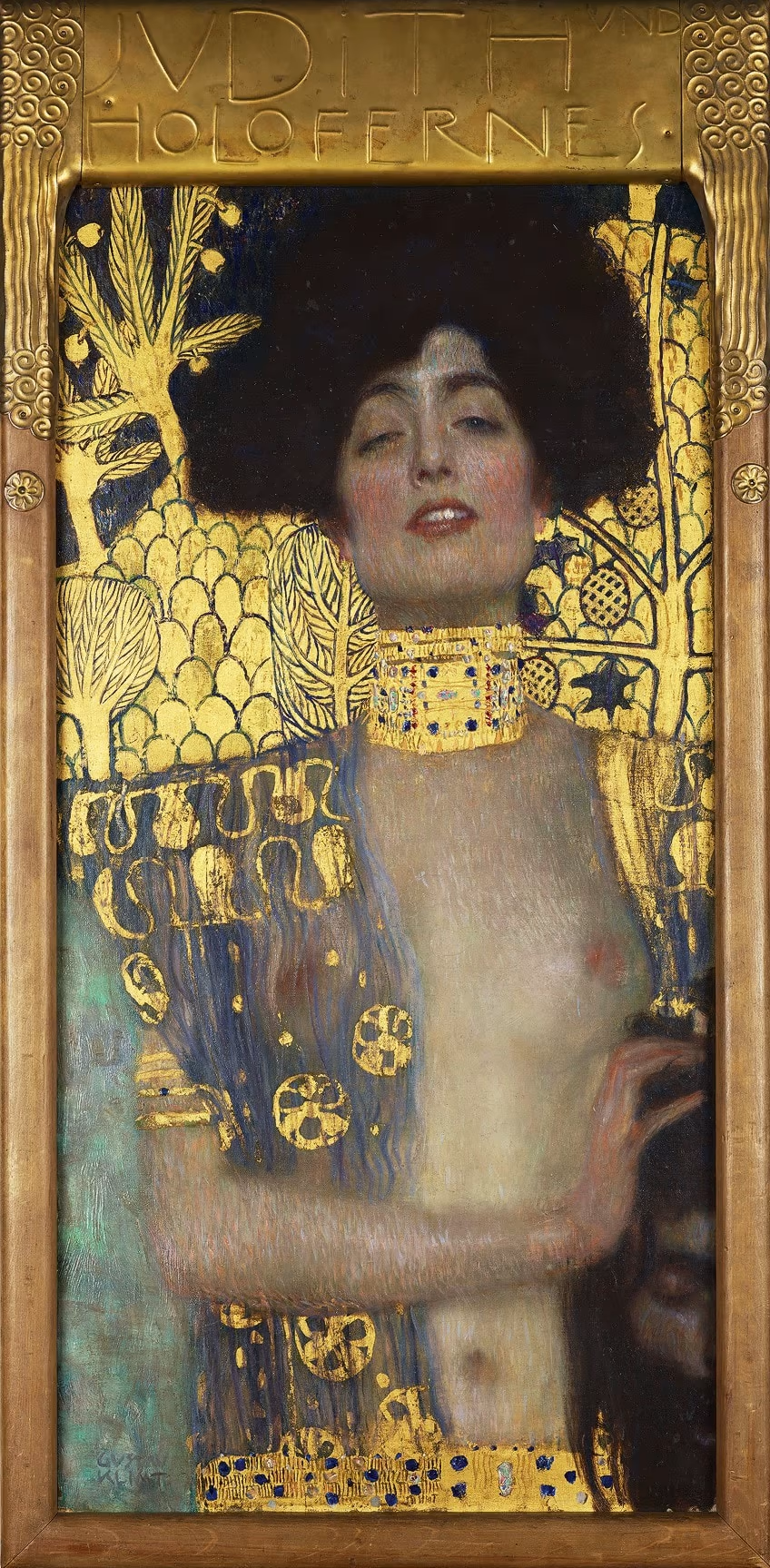
This was due to her act of courage involving the beheading of Holofernes, who was an Assyrian general, to save her hometown from the wrath of the Assyrian army. In Klimt’s rendition above, he pairs Judith’s seductive gaze and naked evanescent body with the gentle yet disturbing violence associated with the beheaded Holofernes.
Klimt’s spectacular gilded style in the Art Nouveau movement, along with his stylistic designs in the painting, also make this Art Nouveau artwork memorable and unique.
The Dancer’s Reward, for Salomé by Oscar Wilde (1907) by Aubrey Vincent Beardsley
| Artist | Aubrey Vincent Beardsley (1872 – 1898) |
| Date | 1907 |
| Medium | Process prints from a line block |
| Dimensions (cm) | 34.7 x 27.3 |
| Where It Is Housed | Metropolitan Museum of Art, New York, USA |
Aubrey Beardsley is an important artist of the British Art Nouveau scene and is famous for his work on Oscar Wilde’s play Salomé, which was first shown on the set of the 1907 play. In the painting, translated onto Japanese vellum via woodblock printing, is the figure of Salomé, who is seen holding the severed head of John the Baptist. The head appears almost freshly cut as blood drips down the platter like a fountain.
The illustration featured in the 1894 book is on the opposing side of page 56.

The Tree of Life, Stoclet Frieze (1909) by Gustav Klimt
| Date | 1909 |
| Medium | Oil on canvas |
| Dimensions (cm) | 195 x 102 |
| Where It Is Housed | Museum of Applied Arts, Vienna, Austria |
Painted by the renowned Austrian Symbolist and Art Nouveau artist, Gustav Klimt, The Tree of Life, Stoclet Frieze (1909) is a classical example of the Art Nouveau style. The painting forms part of a series of three mosaics, which were commissioned for Palais Stoclet in Brussels.
The painting showcases the tree of life portrayed in a swirling, distorted manner.
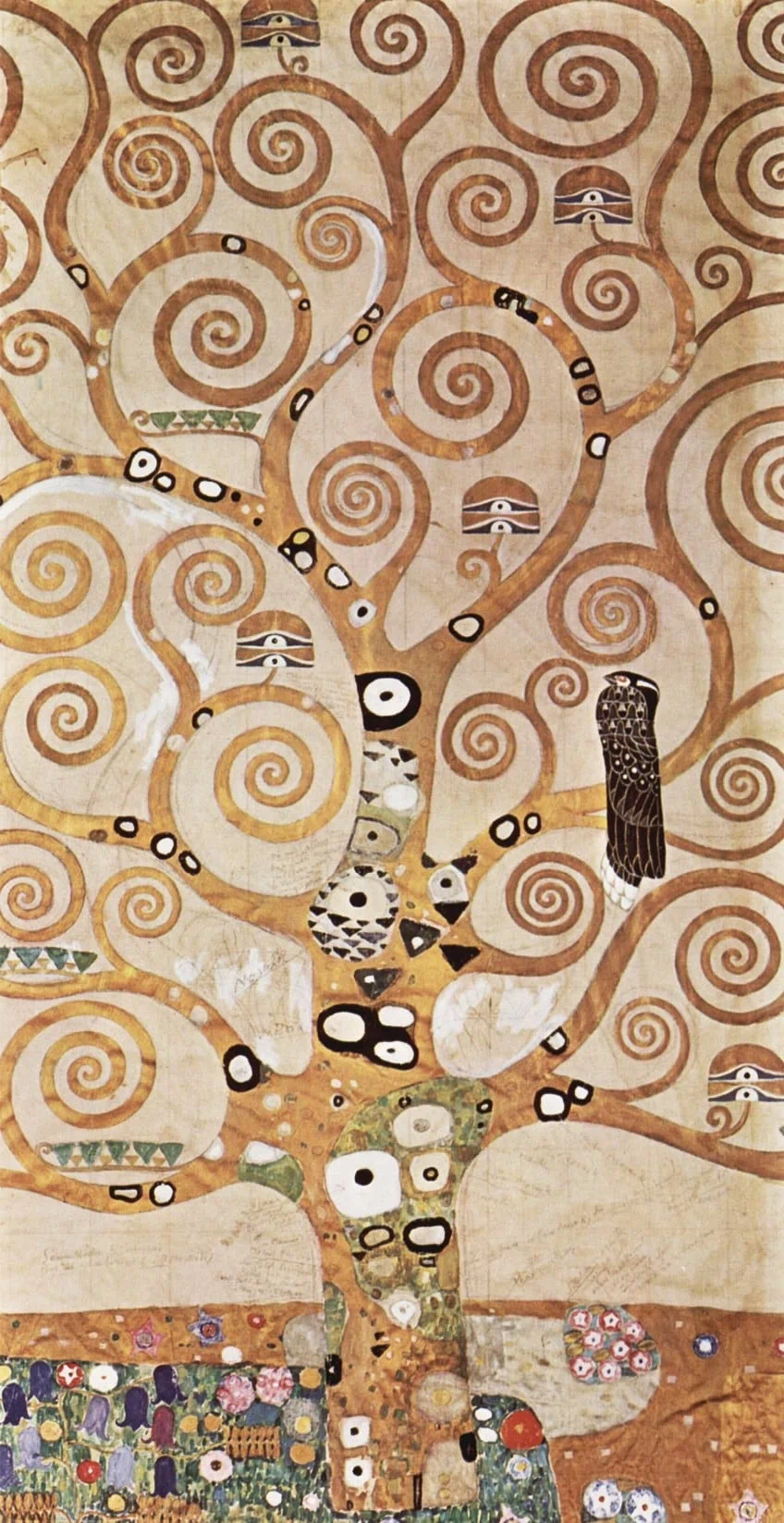
Other portions of the triptych portray a couple and a woman in a standing position. This artwork was put on display in the dining area of the Palais. The presence of a modern style can be seen in the background of the artwork defined by the swirling movement of the branches on the tree of life.
Gustav Klimt was also known to be influenced by Margaret Macdonald.
The Slav Epic (1910 – 1928) by Alphonse Mucha
| Artist | Alfons Maria Mucha (1860 – 1939) |
| Date | 1910 – 1928 |
| Medium | Oil on canvas |
| Dimensions (m) | Varied; largest at 6 x 8 |
| Where It Is Housed | National Gallery of Prague, Prague, Czech Republic |
The Slav Epic was a massive series of paintings executed by the Art Nouveau painter, Alphonse Mucha who wished to showcase his pride in the culture of the Slavic people through various depictions of Czech history and mythology. The artist spent the majority of his life traveling to source viable information to execute his paintings. As he completed his paintings, he submitted them to the city and the works even received much international adoration.
Among his works were other Art Nouveau posters, which made brilliant use of vivid colors.
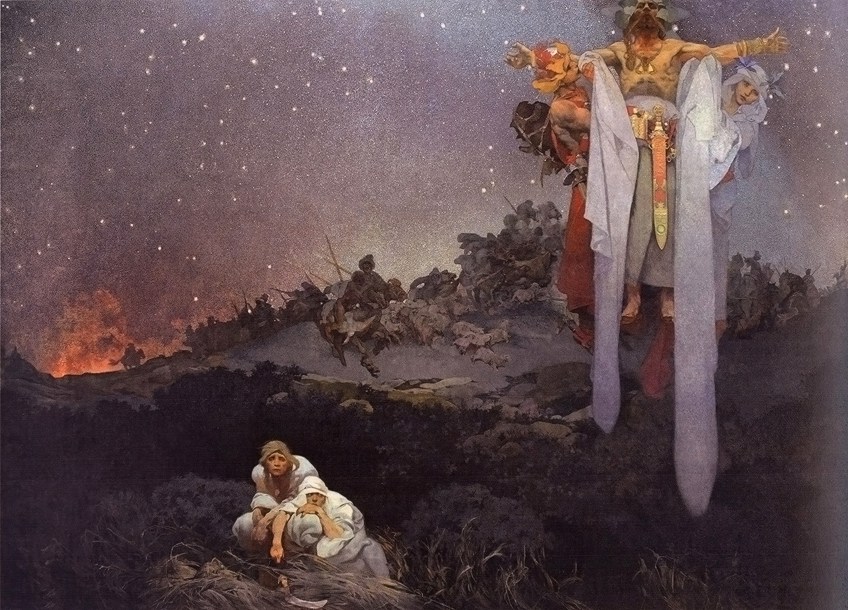
Reclining Woman with Green Stockings (Adele Harms) (1917) by Egon Schiele
| Artist | Egon Leo Adolf Ludwig Schiele (1890 – 1918) |
| Date | 1917 |
| Medium | Gouache and black crayon on paper |
| Dimensions (cm) | 29.4 x 46 |
| Where It Is Housed | Private collection |
Painted just a year before his death, Egon Schiele created Reclining Woman with Green Stockings in 1917 as part of his series of Schiele women who were depicted expressing their sexuality in appealing and erotic ways. Aside from his Art Nouveau style, the artist also incorporated the Expressionist style.
Schiele was placed under high criticism for his paintings of young nude models, which were questionable and classed as “obscene”.
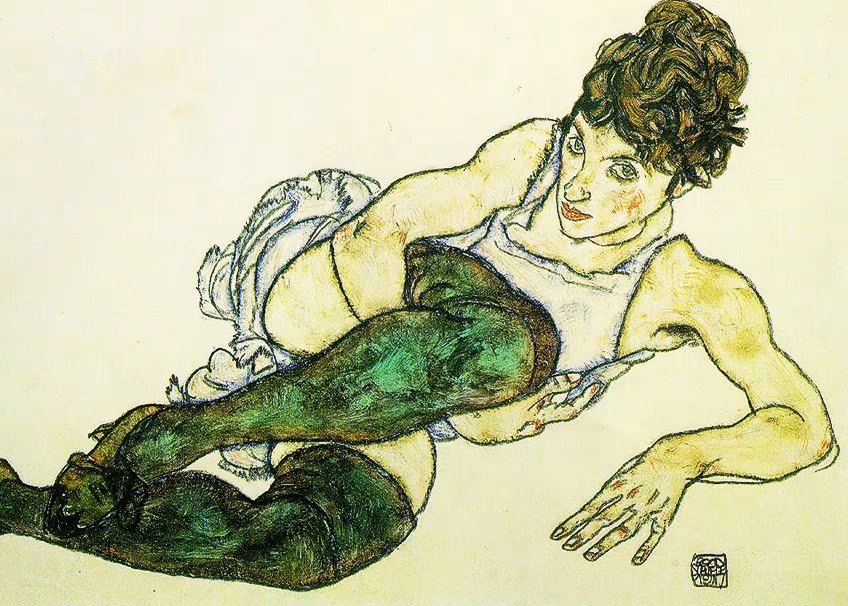
Merchant’s Wife at Tea (1918) by Boris Kustodiev
| Artist | Boris Mikhaylovich Kustodiev (1878 – 1927) |
| Date | 1918 |
| Medium | Oil on canvas |
| Dimensions (cm) | 120 x 120 |
| Where It Is Housed | The State Russian Museum, St. Petersburg, Russia |
Merchant’s Wife at Tea (1918) was created by a Russian-Soviet painter, Boris Kustodiev who was also a set designer who possessed a “deep love for art” as described by Ilya Repin, one of his art mentors. Around 1910, just after the Russian Revolution, Kustodiev joined a group of revolutionary artists called the Mir Iskusstva where he began exhibiting frequently.
Kustodiev was also interested in book design and produced many illustrations throughout his career.
He also created illustrations for many classical Russian pieces of literature, including The Lay of Tsar Ivan Vasilyevich (1837) by Mikhail Lermontov and The Candle (1886) by Leo Tolstoy. Clearly a man of many talents, the Art Nouveau painter showcased his talent through vivid colors in Merchant’s Wife at Tea, which served as a recollection of beauty, a reference to tea-drinking ceremonies, and an ode to the permanence of the past.

Each subject in the painting was handled with care and can be observed in the eye-catching marble-like quality of the woman’s alabaster skin, the daintiness of the way she holds the saucer, the affections of the cat, and the freshly cut watermelon on the table. It is almost as if the memory were still alive.
In one moment, one can imagine the stillness and the movement in the painting, which makes for an excellent representation of the Art Nouveau woman in Russian painting.
The Impact of Art Nouveau
The need for change that spread across the world since the origin of Art Nouveau in design, art, and architecture is said to have paved the way for Modernism amidst the rise of Industrialization. The impact of Art Nouveau also highlighted the need for people to equate the value and importance of the crafts division compared to the value attributed to the finer arts, as seen in sculptures and paintings in academic art.
It is still contested as to whether Art Nouveau has actually merged the gap between the applied and fine arts.
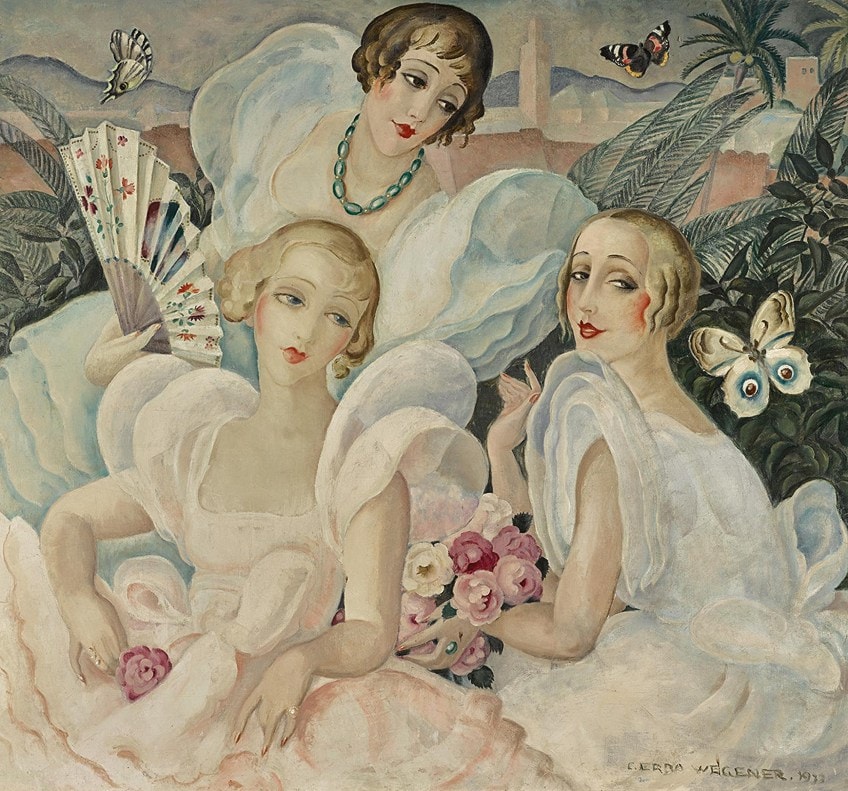
Art Nouveau also gave rise to new methods of making, which can be seen in glass art through acid-etched glass artworks and objects such as lamps and desk objects. The rise of Art Nouveau also coincided with the growth in retailing, which also saw a rise in the employment of Art Nouveau designers. After disappearing from Europe around 1910, the Art Nouveau movement was once again applied in the 1960s and 1970s when designers grew frustrated at the minimal aesthetics within the graphic arts.
The Art Nouveau period was definitely the birthing point of some of the world’s first signs of Modernism and the incorporation of creative design elements into fine art and painting. Other important Art Nouveau influencers to study include Peter Behrens, Emile Gallé, Victor Prouvé, Eugène Gaillard, Jules Chéret, and Valentin Serov.
Take a look at our Art Nouveau paintings webstory here!
Frequently Asked Questions
Who Are the Popular Art Nouveau Painters?
Among the popular Art Nouveau painters are Gustav Klimt, Alphonse Mucha, Henri de Toulouse-Lautrec, Jan Toorop, Gerda Wegener, and many others.
What Are the Characteristics of an Art Nouveau Painting?
Art Nouveau-style painting includes creative design motifs and is usually heavily ornamental. The characteristics include continuous, whiplash lines found in poster art, illustrations, architecture, and glass designs. Other characteristics include asymmetry, the use of Japanese motifs, curved lines, mosaic-like features, stained glass, and other embellishments.
When Did Art Nouveau Begin and End?
Art Nouveau began around the late 19th century, 1890, and lasted until the early 20th century, around 1914.
Jordan Anthony is a Cape Town-based film photographer, curator, and arts writer. She holds a Bachelor of Art in Fine Arts from the University of the Witwatersrand, Johannesburg, where she explored themes like healing, identity, dreams, and intuitive creation in her Contemporary art practice. Jordan has collaborated with various local art institutions, including the KZNSA Gallery in Durban, the Turbine Art Fair, and the Wits Art Museum. Her photography focuses on abstract color manipulations, portraiture, candid shots, and urban landscapes. She’s intrigued by philosophy, memory, and esotericism, drawing inspiration from Surrealism, Fluxus, and ancient civilizations, as well as childhood influences and found objects. Jordan is working for artfilemagazine since 2022 and writes blog posts about art history and photography.
Learn more about Jordan Anthony and about us.
Cite this Article
Jordan, Anthony, “Art Nouveau Paintings – Explore the Art Nouveau Style in Artworks.” artfilemagazine – Your Online Art Source. September 13, 2022. URL: https://artfilemagazine.com/art-nouveau-paintings/
Anthony, J. (2022, 13 September). Art Nouveau Paintings – Explore the Art Nouveau Style in Artworks. artfilemagazine – Your Online Art Source. https://artfilemagazine.com/art-nouveau-paintings/
Anthony, Jordan. “Art Nouveau Paintings – Explore the Art Nouveau Style in Artworks.” artfilemagazine – Your Online Art Source, September 13, 2022. https://artfilemagazine.com/art-nouveau-paintings/.


